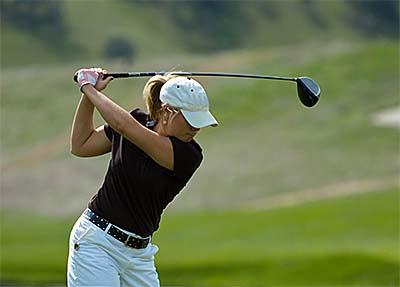 Golf might have the stigma of being perceived as a game for rich, old, white men, but club's reinforcing that stereotype are missing out on a growth opportunity.
Golf might have the stigma of being perceived as a game for rich, old, white men, but club's reinforcing that stereotype are missing out on a growth opportunity.
"Power, income, education, everything is rising among the female demographic," said Bob Baldassari, director of youth golf development for the PGA of America, during this year's Green Start Academy.
"We've seen good results of marketing efforts to try to get the whole family out to the golf course, and some courses are actively seeking that demographic for membership because of women's increasing buying power, control of household scheduling. The list goes on and on."
Chasing the same demographic year after year and failed attempts to grow the game have resulted in a net loss of more than 500 golf courses (18-hole equivalents) since 2006, according to the National Golf Foundation. Facilities that work toward attracting female golfers could go a long way toward avoiding a spot on future NGF lists, said Baldassari, who has worked as a golf professional and general manager for more than 20 years.
According to recent stories in Time and BusinessWeek, women 30 and under earn more money than male counterparts in many of the country's largest cities. Although nationally women still earn 20 percent to 40 percent less than male counterparts, according to several studies, women are attending college in greater numbers than men and are graduating at a higher rate, according to Forbes. That spells opportunity for forward-thinking golf facilities, said Baldassari.
Bob Farren, CGCS at Pinehurst Resort, concurred with Baldassari's assessment of women's role in the family and potential impact on the game of golf.
"They have a big influence on getting children involved," Farren said during the eighth annual Green Start, an educational event for assistant superintendents presented by John Deere Golf and Bayer Environmental Science. "Every good player you know who grew up in junior golf, it was their mother who took them to golf events."
Actively seeking women, however, requires rethinking the standard golf business model.
When Baldassari was general manager at PGA Golf Club in Port St. Lucie, Fla., he learned that aspects of the game, including events such as new product demo days, that attract men do nothing to entice women.
"If your message blares demo day and high tech' that doesn't resonate with women," he said. "We changed the name of our demo day to Golf Fest because it sounded more inviting. Immediately, more families came out. We still wanted the guys to come out and see the latest and greatest, but even a lot of men said they thought the name sounded more fun and inviting than demo day."
Baldassari said he believes things such as spending time with friends and building relationships on the golf course are much more important to women overall than Stimpmeter readings and perfectly manicured bunkers. Superintendents should keep that in mind during course set up for women's events, he added.
Baldassari made reference to a 1930s era article in the PGA's official magazine, The Professional Golfer of America, in which PGA president George Jacobus wrote that the association should work to make the game more fun and inviting, including the possibility of 8-inch cups.
"Some of the ideas to grow the game that we think are new," he said, "have been around for a long time."

